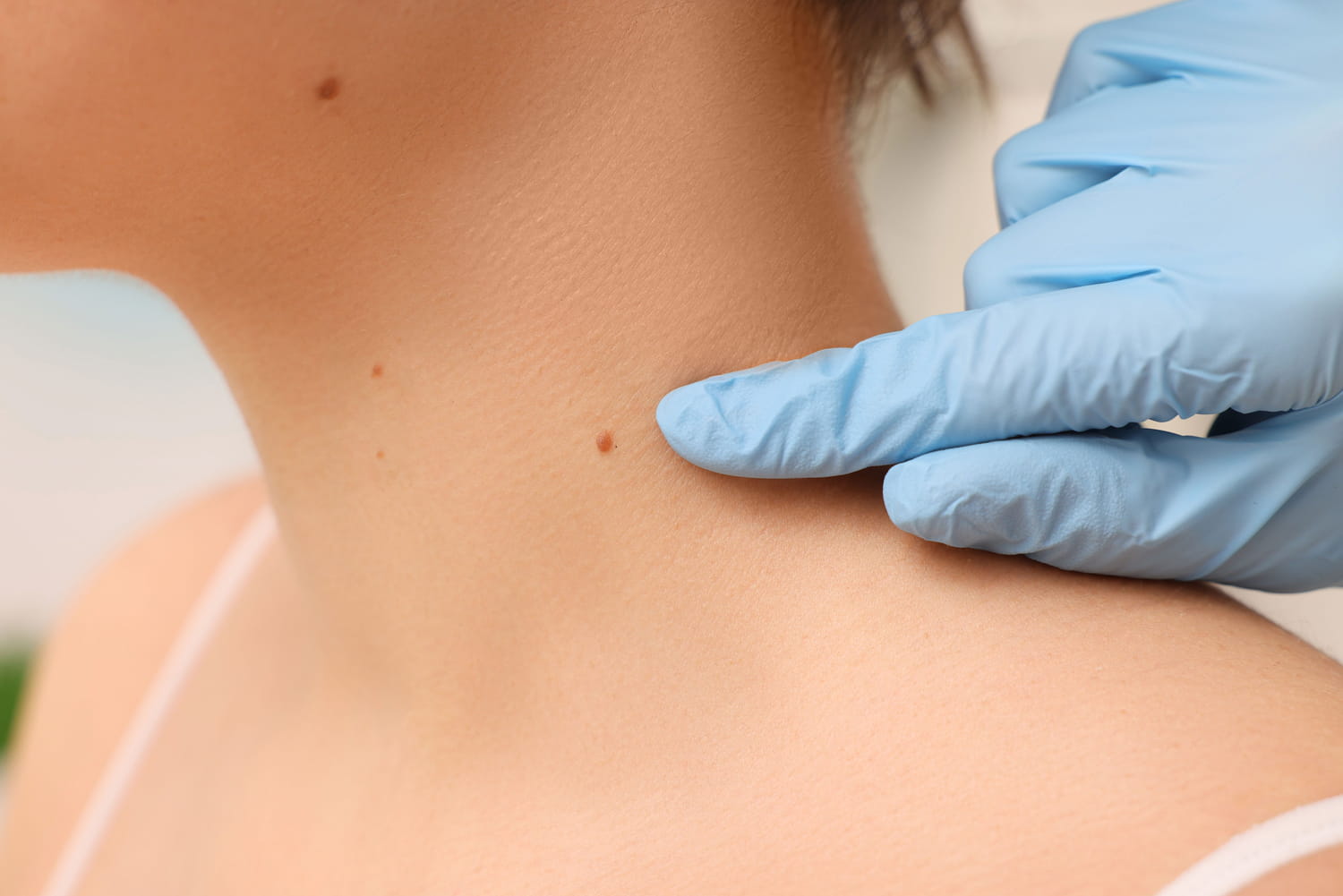This is how to spot suspect signs at a glance.
With more than 100,000 new cases each year, skin cancers are the most frequent in France and 80% of them are linked to excessive sun exposure. The most serious is melanoma, “His incidence was multiplied by 5 between 1990 and 2023” deplore the National Cancer Institute. It can develop from an existing beauty grain or appear on healthy skin. Learning to observe your skin is thus an essential health gesture.
“There is no 100% reliable method to find out if a beauty grain is cancerous without consulting a dermatologist” Recalls Dr. Mika Tabata, dermatologist and professor of dermatology at the University of Texas in the United States but to identify a grain of suspicious beauty in time can save life. The method validated by all dermatologists is the ABCDE rule, “It can help you determine if a mole requires a visit to the dermatologist“, confirms Dr. Tabata. How to do?
Once a quarter, observe carefully your bare skin, from head to toe, from the front and back, without forgetting the little visible areas (ears, nails, soles of the feet, spaces between the fingers, genitals …) and looking for evocative signs following the ABCDE letters: a for “asymmetry”: half of the mole is not superimposable to the other; B for “irregular edges”: the contours are fuzzled, chicated or poorly delimited; C for “non -homogeneous color”: it has a mixture of color (brown, black, beige, red, white); D for “diameter”: it is more than 6 millimeters; E for “evolution”: the most important criterion. A grain of beauty that quickly changes size, shape or color, or that starts to bleed without reason, must imperatively alert.
The presence of one or more of these signs does not necessarily mean that you have melanoma but justifies to request a medical advice without delay. Surveillance is the key, but prevention remains the best protection: avoid exposing between 12 p.m. and 4 p.m., search for shadow, cover, apply a minimum index sunscreen every two hours and “Do not expose yourself to UV tanning lamps because they increase the risk of developing melanoma”warns the Foundation for Medical Research.
It is advisable to be examined by a dermatologist once a year. If a lesion seems suspicious to him, only a biopsy, that is to say the removal of a small piece of skin for analysis, will confirm or not the diagnosis of cancer.







